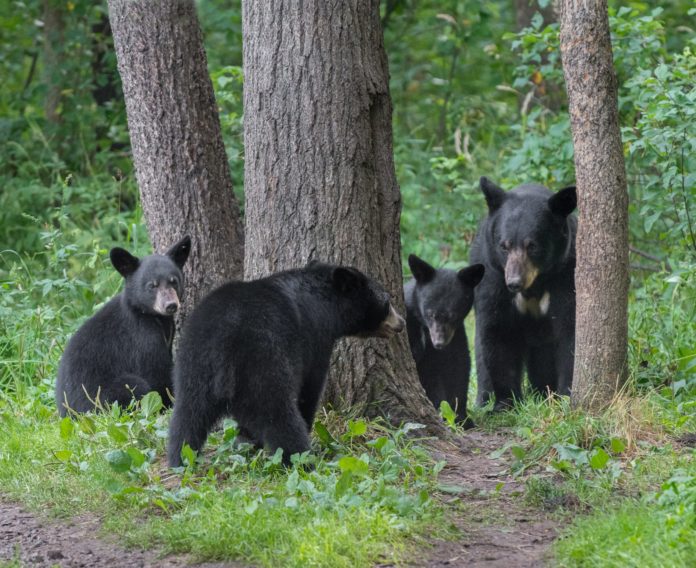AUBURN, Ala. – On vacations to the Tennessee or Georgia mountains, many hope to catch a glimpse of a black bear or two. What some don’t realize is there are populations of black bears living right here in Alabama. In fact, the black bear is Alabama’s official state mammal. As with any wildlife, there are certain things about black bears people should know.
Black bear populations
These beautiful creatures are native to Alabama, but in years past numbers have declined. However, recent studies have found these populations could be expanding.
Norm Haley, an Alabama Extension forestry, wildlife and natural resources regional agent, said the decrease in the number of black bears was due to several factors.
“Black bear numbers were sent into severe decline through unregulated market hunting and loss of habitat,” Haley said. “Black bears are game animals; however, there is no hunting season for them in Alabama. It is illegal to kill a black bear unless there is a threat of imminent danger.”
There are two areas of Alabama with established black bear populations. One being in the southwestern portion of the state, primarily within the Mobile-Tensaw Delta region, and the other in northeast Alabama in DeKalb and Cherokee Counties.
According to Haley, population studies and monitoring are ongoing.
“The southwestern portion of the state is home to an estimated 85 to 160 bears,” he said. “In the northeastern corner of Alabama, population numbers are estimated to be between 30 and 40 bears.”
Northern Alabama populations are expanding slowly, while southern populations are somewhat steady in number. Haley said Alabama certainly sees a number of transient bears from Florida, North Carolina, Tennessee and Georgia, particularly in the summer when young males are forced to find new territories.
Characteristics
Southern black bears are not as large as northern bears. In studies performed by Auburn University, the largest trapped bears recorded are just over 300 pounds. On average, adult bears weigh between 150 and 200 pounds.
When it comes to habitats, black bears are highly adaptable. The southern Alabama populations live in the swamps; whereas in northeast Alabama, they live in the mountains.
“In these areas, the bears rely heavily on soft mast (berries), hard mast (acorns), rodents and plant tubers as food sources,” Haley said.
Things that attract black bears
In general, areas near humans attract black bears because they can find food sources there.
“Pet food on porches, garbage in a can, a greasy barbecue grill and even bird feeders are all an attractive and easy meal for a bear,” Haley said. “Ripe fruit trees and vegetable gardens are also attractive.”
Haley said that even an empty pet food dish can attract bears because of the oil residue.
“Clean up and secure these attractions and you will greatly reduce the risk of a bear near your residence,” Haley said.
Encountering a black bear
According to Haley, bear attacks are extremely rare and there have been no recorded attacks in Alabama. Black bears are rarely aggressive and are often as scared of humans as humans are of them. However, he said remember that these animals are still wild, and people should never feed or approach a bear.
“Attacks are most often prompted by a mother defending her cubs,” Haley said. “If you find yourself close to a black bear or cubs, do your best not to surprise them. Make your presence known.”
Haley said this can be done by saying, “Hey, bear,” and making yourself look big by standing tall, puffing your chest and keeping your arms away from your body.
“Always back away slowly from the encounter,” he said. “Do not run or make frantic movements that could entice a chase.”
More information
For more information about Alabama’s black bear, visit www.aces.edu or contact your county Extension forestry, wildlife and natural resources agent. Outdoor Alabama is also a great online resource for information on wildlife in Alabama.





















